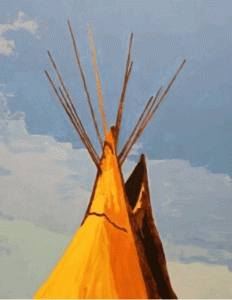1 Video Series – Details
Overview

The Land Acknowledgments Informational Video Series – Original and Contemporary Views is a creative activity funded by the Diversity, Indigeneity, and Anti-Racism Professional Development Funds Grant at the University of Windsor. Each video will provide viewers with new knowledge, narrated by Russell Nahdee, to help viewers understand various topics surrounding the land acknowledgment process. As many are still new to Indigenization and decolonization, this topic may become an entry point whereby viewers can begin to understand the complexity and history of the land known today as southwestern Ontario. The series will be an open educational resource designed to welcome viewers into this necessary conversation supporting Truth and Reconciliation through an educational lens. This guide will offer brief descriptions, links, and embed codes for the videos so viewers can share them in their teaching venues.
Video 1 – Introductions to land acknowledgements (Series 01)
The Land Acknowledgement’s informational video series, Original and Contemporary Views, is designed to inform viewers by exploring the history of Indigenous land acknowledgements in Southwestern Ontario and how they have evolved into present-day versions. The series will start with an introduction by Russell Nahdee and then travel through a pre-European contact period to contemporary views, using short five-minute videos and a storytelling approach.
Introductions to land acknowledgements (Series 01) – Video URL Direct Link (01:52)
https://uwindsor.yuja.com/V/Video?v=1045981&node=5555639&a=185632358
Introductions to land acknowledgements (Series -01) – Embed Code
<iframe title=’Embedded Media titled: Introductions-to-land-acknowledgements-Series-01′ width=”560″ height=”315″ src=”https://uwindsor.yuja.com/V/Video?v=1045981&node=5555639&a=185632358&preload=false” frameborder=”0″ webkitallowfullscreen mozallowfullscreen allowfullscreen loading=”lazy”></iframe>
Video 2 – Original pre-contact views on the land
This video discusses the use of the oral tradition. It also discusses wampum belts and their significance, including the Two-row Wampum (separating European and Indigenous journeys) and the Dish with One Spoon wampum belt (Indigenous sharing of the land and resources). Further, 500 years ago, before European contact, Indigenous people gathered at the mouth of the Detroit River. People came from all over. They have heard through oral tradition and the use of wampum strings, and they are waiting at the edge of the woods to be invited in to discuss important matters in groups.
Original pre-contact views on the land – Video URL Direct Link (07:33)
https://uwindsor.yuja.com/V/Video?v=1045980&node=5555638&a=49003729
Original pre-contact views on the land – Embed Code
<iframe title=’Embedded Media titled: Original-pre-contact-views-on-the-land’ width=”560″ height=”315″ src=”https://uwindsor.yuja.com/V/Video?v=1045980&node=5555638&a=49003729&preload=false” frameborder=”0″ webkitallowfullscreen mozallowfullscreen allowfullscreen loading=”lazy”></iframe>
Video 3 – A story of a historical destruction to a contemporary reconciliation
At the mouth of waters, now known as the Detroit River, Indigenous peoples gather and have been informed to arrive through wampum strings. They gather at the edge of the woods before entering. Contrary to a peaceful, respectful gathering and ceremony at a huge boulder, the early French settlers see the ceremonies at the boulder as idol worshiping and they instigate destroying the huge boulder. Modern structures in the area pay homage to the original Boulder and Turtle Island through a sculpture of a turtle carrying the grandfather stone on the current Herb Gray Parkway trail, and viewers are brought along to this location to explore some of the Turtle Island story and some history of this region.
A story of a historical destruction to a contemporary reconciliation – Video URL Direct Link (04:40)
https://uwindsor.yuja.com/V/Video?v=1045983&node=5555641&a=24658713
A story of a historical destruction to a contemporary reconciliation – Embed Code
<iframe title=’Embedded Media titled: A-story-of-destruction-and-reconciliation’ width=”560″ height=”315″ src=”https://uwindsor.yuja.com/V/Video?v=1045983&node=5555641&a=24658713&preload=false” frameborder=”0″ webkitallowfullscreen mozallowfullscreen allowfullscreen loading=”lazy”></iframe>
Video 4 – Forms, representations and agreements of land acknowledgements
What constitutes valid information from the oral tradition to inform land acknowledgement decisions? This video explores various forms and representations that are currently available. For example, wall art, visual art, public art, commemorative art, and stories from our collective memory can be used to set the stage for informed citizenship. Also, history is just a series of data points. Still, Indigenous data points are found not only in literature and written texts but also in museums and many other collections in official institutions, as well as stories.
Forms, representations and agreements of land acknowledgements – Video URL Direct Link (02:52)
https://uwindsor.yuja.com/V/Video?v=1042366&node=5521316&a=39004410
Forms, representations and agreements of land acknowledgements – Embed Code
<iframe title=’Embedded Media titled: Forms-Representations-and-agreements-of-Land-acknowledgements’ width=”560″ height=”315″ src=”https://uwindsor.yuja.com/V/Video?v=1042366&node=5521316&a=39004410&preload=false” frameborder=”0″ webkitallowfullscreen mozallowfullscreen allowfullscreen loading=”lazy”></iframe>
Video 5 – Summary and looking ahead…
The video series explored some historical events and interpretations that evolved from the oral tradition and determined where original evidence might be found from the pre-and post-contact periods. This video connects the importance of engaging with and hearing stories from people whose families have been on that land for generations. Hearing from local Indigenous community experts will build those relationships and establish trust.
Summary and looking ahead . . . Video URL Direct Link (03:41)
https://uwindsor.yuja.com/V/Video?v=1042369&node=5521319&a=199267993
Summary and looking ahead . . . Embed Code
<iframe title=’Embedded Media titled: Summary-and-looking-ahead’ width=”560″ height=”315″ src=”https://uwindsor.yuja.com/V/Video?v=1045979&node=5555637&a=50758147&preload=false” frameborder=”0″ webkitallowfullscreen mozallowfullscreen allowfullscreen loading=”lazy”></iframe>
Summary and Next Steps
This series began the story, and the authors hope to continue to build future video series by interviewing local knowledge keepers about their history and perspectives. Much is to be known and shared to make meaningful and respectful land acknowledgements as a tribute to the land’s original caretakers and help fulfill our commitments for meaningful actions on truth and reconciliation.
Contact Information
Contact us: General Inquiries email: openlearning@uwindsor.ca or call 519-253-3000 ext. 2008
Website: https://www.uwindsor.ca/openlearning/

